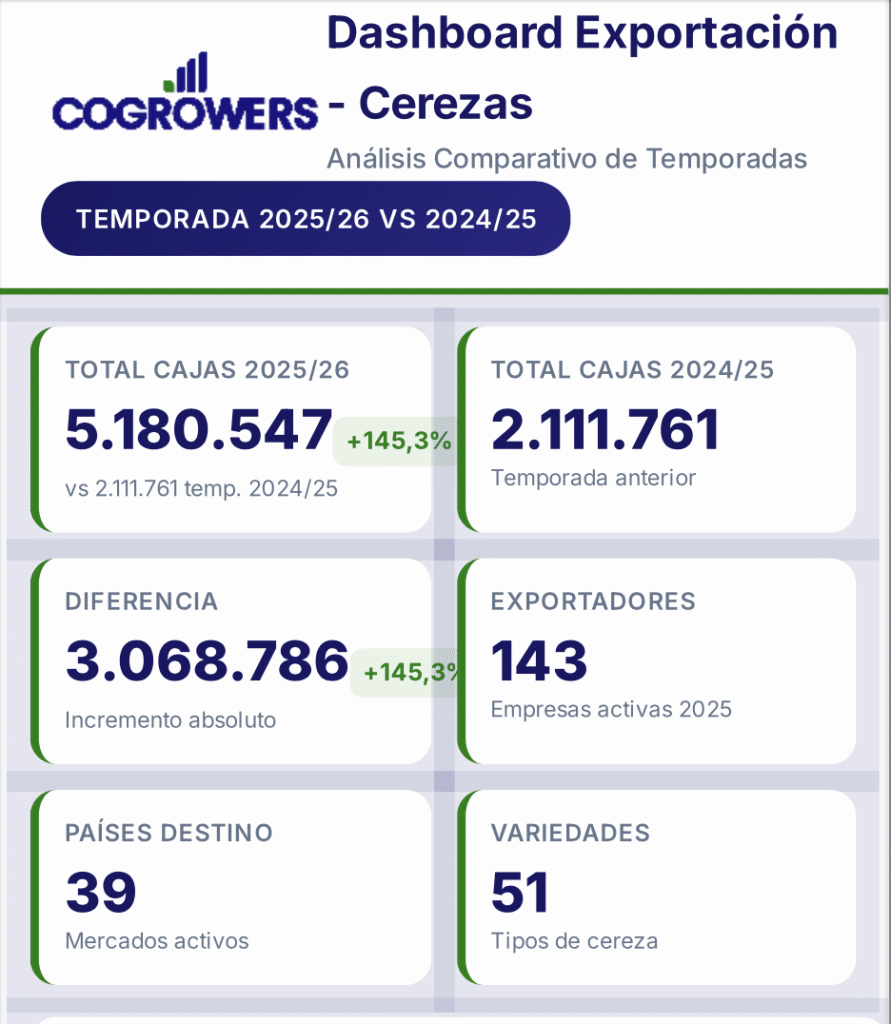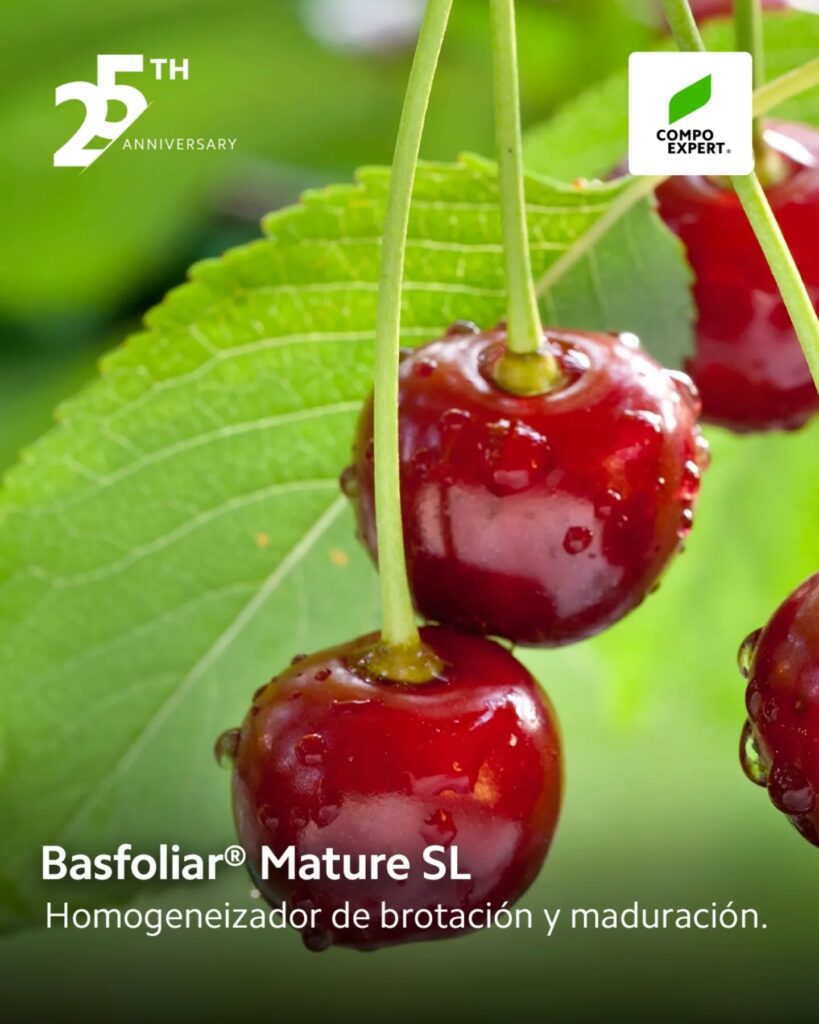“The ASOEX Cherry Committee prepared for a challenging season, aware of the great challenges that lay ahead, from health uncertainty, logistical constraints, lack of labor, among other challenges. The strategic focus of the committee was to work as an Industry together with the SAG to have a better quality of cherries,” said Ronald Bown, President of ASOEX.

Although, Cristián Tagle, President of the ASOEX Cherry Committee, highlights that the start of the season was encouraging, since, “There was improved quality and outstanding prices, with greater diversification to destinations other than China. It was shown that agreeing on criteria from the Committee's quality table was yielding results. However, external shocks generated very negative impacts, as did the increase in inspections of imported fruit by China, which caused an unexpected disruption by extending the time it took for containers to enter Chinese territory.”
Tagle commented that as the volume increased to more than 1,500 containers per week on several ships, a significant fraction of cargo was delayed in entering the markets.: “With the emergence of the Omnicron variant, the situation worsened even further, resulting in a deterioration in condition. Most of the fruit was sold between 40 and 60 days after it was harvested. As expected, this delay in release left us with approximately 40% of the volume (already arrived and yet to arrive) to be sold after the Chinese New Year holiday, something unprecedented for the cherry industry up to that point. Despite the Committee’s attempts, which invested an additional US$ 1 million post-Chinese New Year to reactivate demand, the condition of the fruit made it almost impossible to sell at good prices, which significantly impacted the overall results of the season.”
Despite the negative close, the Committee highlights that if the season is analysed as a whole, there was a good overall result, but with large divergences in the results, which depended on the varieties (the most affected being Regina) and the quality of the arrival of the fruit, which had a high correlation with the time it took for Chilean cherries to reach the consumers' tables.
Market Diversification

After 3 seasons, the Committee noted that destinations were further diversified, China decreased its volume by -3%, losing share from 91% to 88%.
For its part, the USA had an interesting growth of +100%, the other Asian markets not China grew by +21%, with South Korea standing out with +25% and Taiwan with +30%.
In total, the other destinations added 2.4 million additional boxes, increasing their share by 31%3Q. “There is no doubt that an increase in investment in new markets will be required, both in campaigns and in logistics issues”, the Committee Chairman pointed out.
He added: “While it is true that we must moderate the expectations we had 3 or 4 years ago regarding returns, we cannot doubt that China can pay attractive prices for a good cherry after the Lunar New Year and that there are alternative markets that can consume a significant amount of our cherries at a very competitive price, but understanding that other markets must receive good quality fruit with high price demands, but lower than those that can be obtained in China in a few weeks. If we manage to make decisions thinking about the medium term, to develop new markets, this will allow us to capture the potential that countries outside of China represent. Continuing to think in the short term will make it more difficult to achieve successful diversification.”
Tagle also commented on the importance of continuing to provide China with a better product and of advancing in diversification. “We cannot lose sight of the objective. Continuing to diversify markets is undoubtedly a necessary route, but it is not the only way. Satisfying the main market is and will continue to be the greatest challenge. Increasing the ports of entry in central and northern China appears to be a pending task that we as a Committee must encourage, since it is a sensible and natural evolution for the volumes to come.”
Finally, the Committee Chairman stressed the importance of working together for the future of the industry. “The industry has come this far with unity and resilience, attributes that will be essential for the challenge ahead, which I have no doubt, we will overcome.”r.”

Figures
According to ASOEX statistics, the 2021-2022 Chilean cherry export season set a new record for shipments of 356,385 tons, which was slightly higher than the previous campaign (+1,11%),
Asia was the main destination for Chilean cherries, receiving 325,477 tons, showing a slight decrease compared to the previous year of -1,52%, which would be explained by lower shipments to China.
In second place is the North American market (USA and Canada) with 13,876 tonnes (+1771 TP3T), Latin America with 6,504 tonnes (+211 TP3T), Europe with 6,254 tonnes (+291 TP3T) and the Middle East with 274 tonnes (-181 TP3T).








